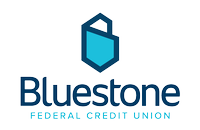The credit union landscape has changed substantially over the last eighty-plus years. Once, tens of thousands of credit unions stood, each serving a unique and specific population within their communities. As the industry has consolidated, those SEG-based credit unions became multi-SEG (to the chagrin of bankers).
With the quick passage of the Credit Union Membership Access Act in 1998 to counteract the Supreme Court’s ruling earlier that year, credit unions now had it signed into law that their field of membership (FOM) could allow for multiple common bonds. Now, only a couple thousand remain.
But this is not an article about mergers and consolidation. Rather, it is about the subsequent wave of rebranding that has arisen as a result of expanding fields of membership and credit unions moving from SEG-based charters to more inclusive community charters. After all, if your credit union is named after a local business or organization, how will those unaffiliated know they too can benefit?
Reasons to entertain a branding change
Sometimes changing the credit union’s name is a matter of more accurately reflecting an expanded charter. Among the examples you will read below is that of Bluestone Federal Credit Union, formerly known as Sioux Empire FCU. After an expansion of their FOM to include far more counties, they felt the prior name might create confusion in that expanded territory.
Others are a condition of merging credit unions who opt to re-form as a new entity rather than one more simply being absorbed into another. And other times it is simply a matter of refreshing the look and feel of the credit union to theoretically reflect the current environment and consumer expectations.
One example that encompasses many of these reasons is Pheple Federal Credit Union. Established in 1951 as Bellco Employees FCU, the credit union was formed to serve the needs of Bell of Pennsylvania Telephone Employees. When it transitioned to a community charter in 2004, it became Westmoreland Community FCU to reflect that broader community focus. A few years and mergers later, the credit union changed once more, this time to Pheple.
In their words: “Westmoreland Community” got us to where we are today, and Pheple is taking us to where we will be tomorrow. The name change was a big step toward our bright future. Pheple aids in the credit union’s growth. It allows us to welcome more people into our community. After all, we wanted something to accurately represent us. Who we are and what we stand for. People helping people. It’s as simple as that.”
Whatever your reasons for pursuing a brand change, the consensus among the industry is this: if you are going to go for it, go all in and commit to the change.
A few considerations for rebranding
This is no small effort. Expect the process to take time, expect a little negative feedback from existing members, and for a couple of hiccups along the way.
Really consider what a brand change means for you and your credit union. We think name and logo, but where else might that brand change stretch into? Will it change how your branches and website are designed? How your team dresses and interacts with members? What about your marketing and the way in which you communicate with your owners?
Rebranding is a good time to take stock of your credit union; what works and what doesn’t. Keep the things that make your credit union the place members came to love. And for those members that associate a name change with the death of their beloved credit union, communicate the change and the reasons for it early and often. Reassure them that just because it will look a little different does not mean you have lost sight of what matters: them.
What other credit unions say about the process
For some real world examples, we asked a handful of CEOs from credit unions that have rebranded in the last decade for their thoughts on the process, whether the change has been worthwhile in their opinion, and some advice to the organization considering that new look and feel.



































































Carma S Peters#1
Esteban, well put together piece with great info!!